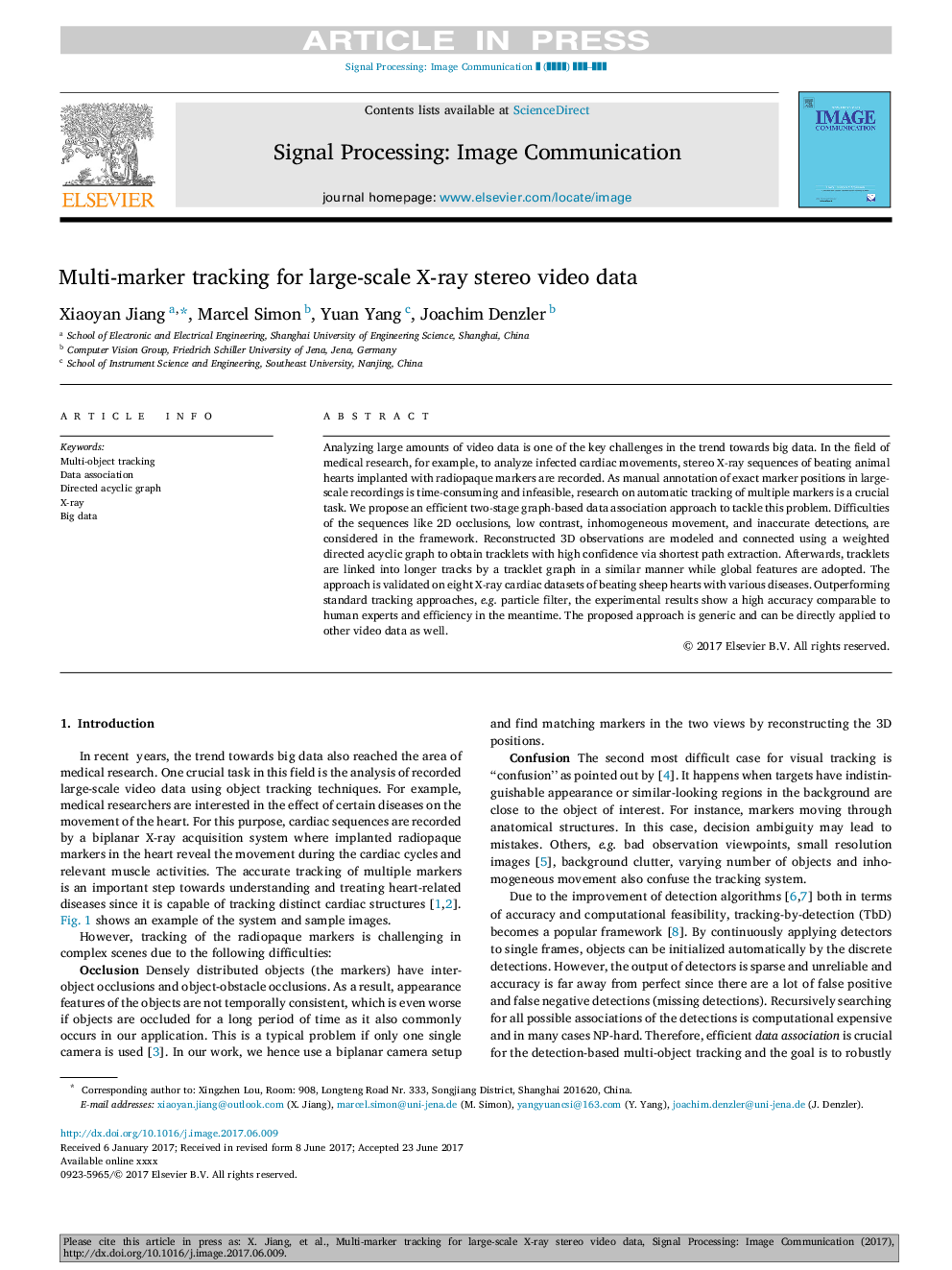| Article ID | Journal | Published Year | Pages | File Type |
|---|---|---|---|---|
| 6941742 | Signal Processing: Image Communication | 2017 | 10 Pages |
Abstract
Analyzing large amounts of video data is one of the key challenges in the trend towards big data. In the field of medical research, for example, to analyze infected cardiac movements, stereo X-ray sequences of beating animal hearts implanted with radiopaque markers are recorded. As manual annotation of exact marker positions in large-scale recordings is time-consuming and infeasible, research on automatic tracking of multiple markers is a crucial task. We propose an efficient two-stage graph-based data association approach to tackle this problem. Difficulties of the sequences like 2D occlusions, low contrast, inhomogeneous movement, and inaccurate detections, are considered in the framework. Reconstructed 3D observations are modeled and connected using a weighted directed acyclic graph to obtain tracklets with high confidence via shortest path extraction. Afterwards, tracklets are linked into longer tracks by a tracklet graph in a similar manner while global features are adopted. The approach is validated on eight X-ray cardiac datasets of beating sheep hearts with various diseases. Outperforming standard tracking approaches, e.g. particle filter, the experimental results show a high accuracy comparable to human experts and efficiency in the meantime. The proposed approach is generic and can be directly applied to other video data as well.
Related Topics
Physical Sciences and Engineering
Computer Science
Computer Vision and Pattern Recognition
Authors
Xiaoyan Jiang, Marcel Simon, Yuan Yang, Joachim Denzler,
